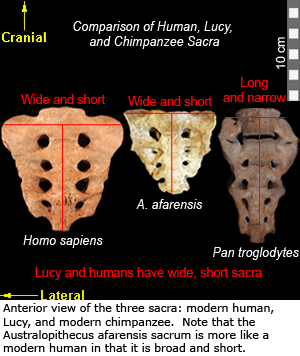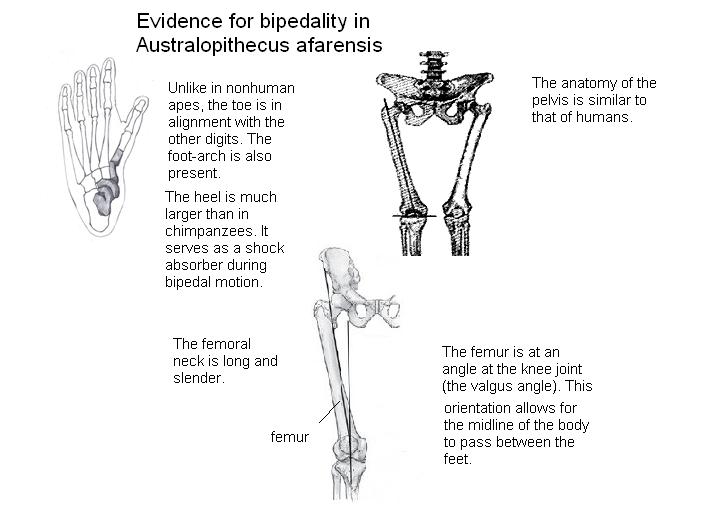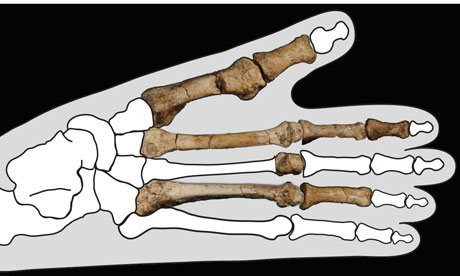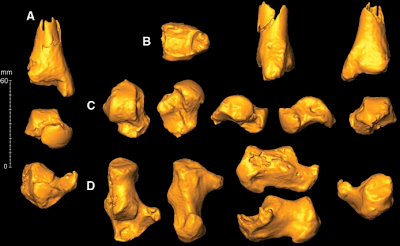Daedalean's_Sun
New member
This is pointless until we can agree on a definition of transitional fossil.
There are two links in the post. The first link has several tables of transitional fossils of which archaeoptrryxis but one and the second link is a definition of transitional fossil. All I am trying to do at this point is to establish a common definition of transitional fossil that we can all use so that the conversation can proceed reasonably. As it stands, I think there is a lot of argument over transitional fossil simply because we do not agree on a definition. I have proposed a definition. Either agree with it or propose your own.Your link says archaeoptrryx is the best known transitional fossil. Are you willing to say that this is the very best example of a transitional fossil...and then defend your belief? If so...what is archaeopteryx transtionlng from and into?
So....a transitional fossil is any fossilized remains of a life form that exhibits traits common to both an ancestral group and its derived descendant group? We can Find a 1,000 different fossils and line them in a pattern. When we find similar features we can call that homologous....evidence of common ancestry? And when we find similar features that don't fit in our pattern, we will call that analogous...evidence of the power of evolution.There are two links in the post. The first link has several tables of transitional fossils of which archaeoptrryxis but one and the second link is a definition of transitional fossil. All I am trying to do at this point is to establish a common definition of transitional fossil that we can all use so that the conversation can proceed reasonably. As it stands, I think there is a lot of argument over transitional fossil simply because we do not agree on a definition. I have proposed a definition. Either agree with it or propose your own.
What would convince you that a fossil is transitional?
OneEyedJack said:How about an ape with human feet (i.e. no thumbs)?
How about an ape with human feet (i.e. no thumbs)?
Yes...of course...holding a pet crocoduck.Are you expecting to see a modern looking ape with feet resembling modern humans? Do you think evolution predicts this kind of chimera?
Yes...of course...holding a pet crocoduck.
Uh...I think you understood Jacks point. There is no transition...
In the beginning, God created..
How about an ape with human feet (i.e. no thumbs)?
Are you expecting to see a modern looking ape with feet resembling modern humans?
Do you think evolution predicts this kind of chimera?
I'm not expecting to see anything, but if I were, it certainly wouldn't be considered a modern ape.
Of course not.
What do you make of the Laetoli prints -- ape or human? Whatever made them had feet shaped like ours.
Granted, I know you're referring to non-human apes, and there is no good term for non-human apes,
but I wanted to make sure that you understand this. Given the imprecise terminology it lends to arbitrary declarations.
To answer your question, the Laetoli prints are believed to have been made by Australopithecus afarensis. Certainly they are bipedal apes (see above) but I don't know that by even the loosest definition of human, I could regard them as humans, despite their gait and foot structure being very similar to ours.
I thought apes worked just fine until you guys started classifying humans as apes. I blame the cladists.
So, other than these prints, what evidence do we have that their feet were shaped like ours?






It was Carl Linneaus that first categorized humans as apes, and by modern standards he was a creationist.
Well, the footprints on their own are pretty good evidence, imo.
But we also have fossil evidence, that indicates certain forms of locomotion, which has certain implications for foot structure:
Phalanx

Then of course the foot bones themselves:

Ankle bones from related austrolopithecine.

I know, I know -- they've been radiometrically dated at 3.6 to 3.8 million years old. K-Ar. But this same method arrived at similar dates for ash (from Mt. St. Helens) that was known to be less than 30 years old. So, really, how do you know some couple and their kid didn't make them while taking a stroll through the area sometime after the last volcanic eruption?
It smells like a misapplication of the technique to me.
I haven't seen K-Ar dating used for samples less than half a million years old or so, since potassium has a half life of over a billion years and the low levels of argon that would leave in a young sample would put huge error bars around the 'date'.
Do you have a source? Was it Steven A. Austin, Ph.D., Creationist Geology Professor?
If it was, there are some serious shortcomings of his to address.
It smells like a misapplication of the technique to me. I haven't seen K-Ar dating used for samples less than half a million years old or so, since potassium has a half life of over a billion years and the low levels of argon that would leave in a young sample would put huge error bars around the 'date'.
